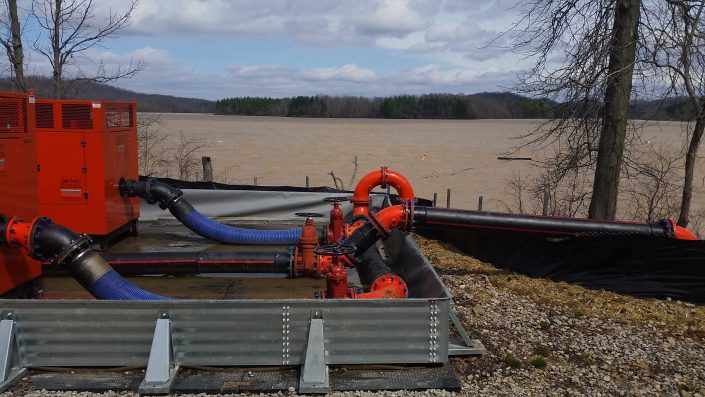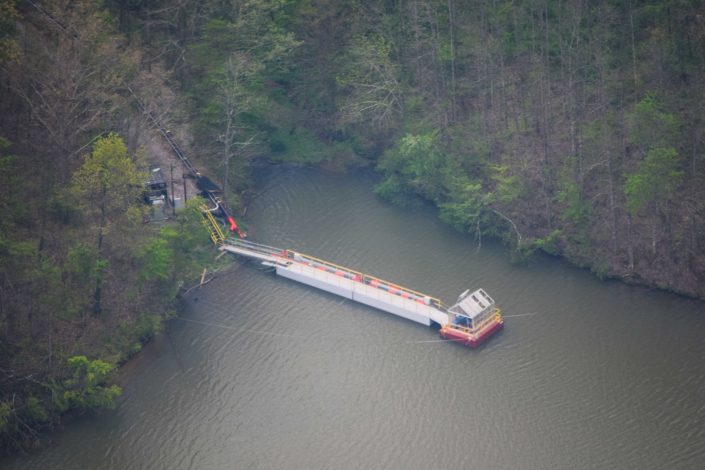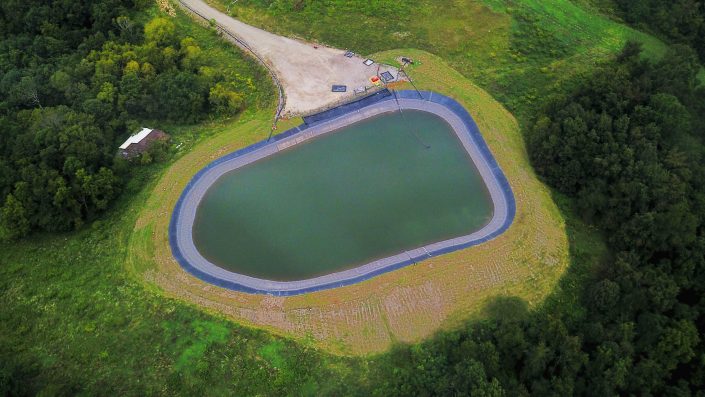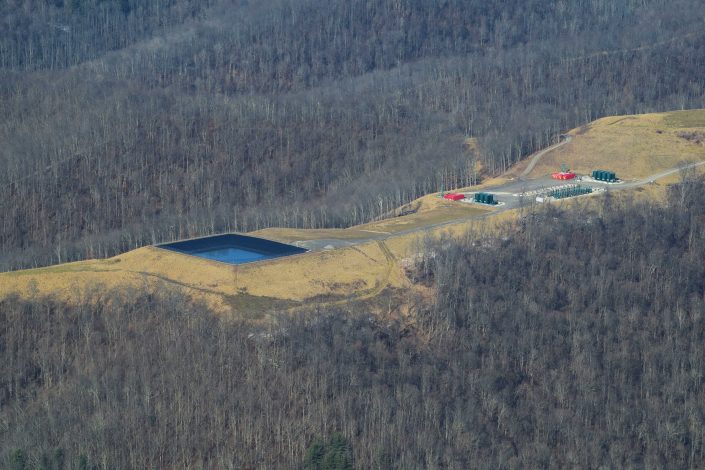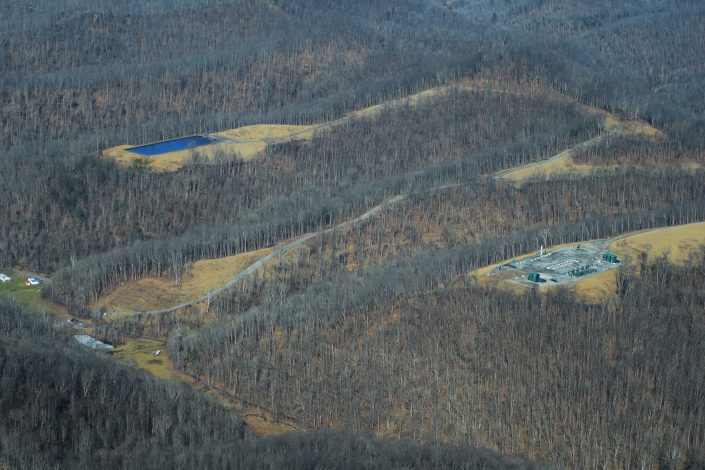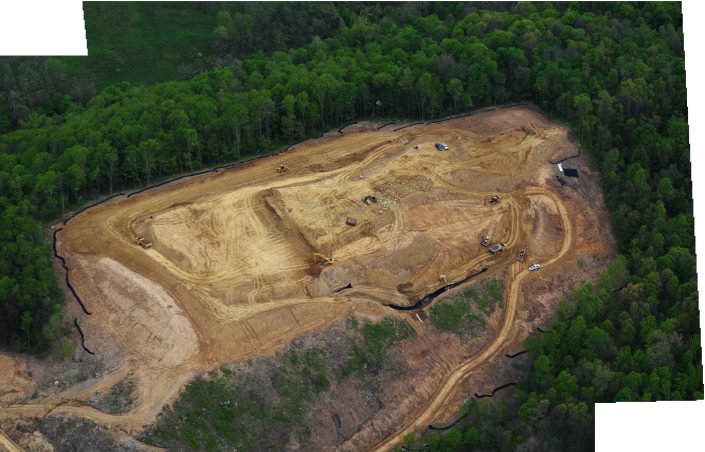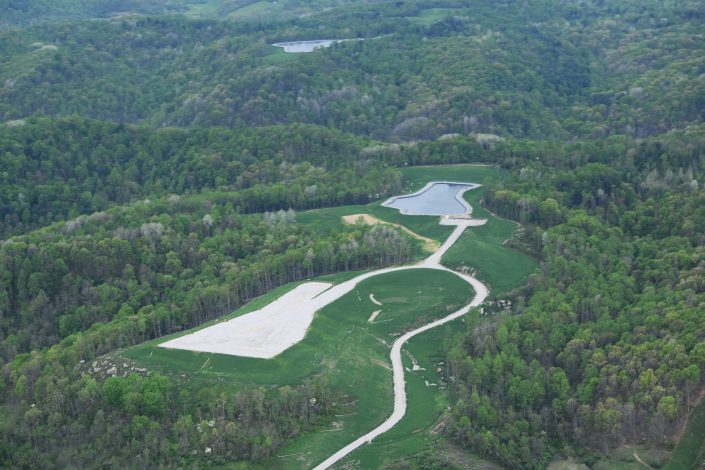Mapping the Petrochemical Build-Out Along the Ohio River
New maps show the build-out of oil and gas infrastructure that converts the upper Ohio River Valley’s fracked gas into petrochemical products
In 2004, Range Resources purchased land in Washington County, Pennsylvania and “fracked” the first well in the Marcellus Shale, opening the flood gates to a wave of natural gas development.
Since then, oil and gas companies have fracked thousands of wells in the upper Ohio River Valley, from the river’s headwaters in Pennsylvania, through Ohio and West Virginia, and into Kentucky.
Industry sold natural gas as a “bridge fuel” to renewable energy, but 15 years since the first fracked Marcellus well, it’s clear that natural gas is more of a barrier than a bridge. In fact, oil and gas companies are not bridging towards clean energy at all, but rather investing in the petrochemical industry- which converts fracked gas into plastic.
This article dives into the expanding oil, gas, and petrochemical industry in the Ohio River Valley, with six maps and over 16,000 data points detailing the build-out of polluting infrastructure required to make plastic and other petrochemical products from fossil fuels.
Download the maps
Fracking for plastic
The petrochemical industry is expanding rapidly, with $164 billion planned for new infrastructure in the United States alone. Much of the build-out involves expanding the nation’s current petrochemical hub in the Gulf Coast, yet industry is also eager to build a second petrochemical hub in the Ohio River Valley.
The shale rock below the Ohio River Valley releases more than methane gas used for energy. Fracked wells also extract natural gas liquids (NGLs) which the petrochemical industry manufactures into products such as plastic and resins. Investing in the petrochemical industry is one way to capitalize on gases that would otherwise be released to the atmosphere via venting and flaring. As companies continue to spend billions more on drilling than they’re bringing in, many are looking towards NGLs as their saving grace.
These maps look at a two-county radius along the upper Ohio River where industry is most heavily concentrated.
Step 1. Extraction
The petrochemical lifecycle begins at the well, and there are a lot of wells in the Ohio River Valley. The majority of the natural gas produced here is extracted from the Marcellus and Utica Shale plays, which also contain “wet gas,” or NGLs, such as ethane, propane, and butane.
active, unconventional wells in the upper Ohio River Valley
Of particular interest to the petrochemical industry is the ethane in the region, which can be “cracked” into ethylene at high temperatures and converted into polyethylene, the most common type of plastic. The Department of Energy predicts that production of ethylene from ethane in the Appalachian Basin will reach 640,000 barrels a day by 2025 – that’s 20 times the amount produced in 2013.
In our first map, we attempted to show only active and unconventional (fracked) wells, a difficult task as states do not have a uniform definition for “unconventional” or “active.” As such, we used different criteria for each state, detailed below.
This map shows 12,660 wells, including:
- 12,507 shale oil and gas wells:
- 5,033 wells designated as “active” and “unconventional” in Pennsylvania
- 2,971 wells designated as “drilled,” “permitted,” or “producing,” and are drilled in the Utica-Point Pleasant and Marcellus Shale in Ohio
- 4,269 wells designated as “active” or “drilled” in the Marcellus Shale in West Virginia
- 234 wells designated as “horizontal” and are not listed as abandoned or plugged in Kentucky
- 153 Class II injection wells, which are used for the disposal of fracking wastewater
- 2 in Pennsylvania
- 101 in Ohio
- 42 in West Virginia
- 8 in Kentucky
The map also shows the Marcellus and Utica Shale plays, and a line demarcating the portions of these plays that contain higher quantities of wet gas. These wet gas regions are of particular interest to the petrochemical industry. Finally, the Devonian-Ohio Shale play is visible as you zoom in.
View Map Full Screen | How FracTracker Maps Work
Step 2. Transportation
Site of the Revolution Pipeline explosion. Photo: Darrell Sapp, Post Gazette.
A vast network of pipelines transports the oil and gas from these wells to processing stations, refineries, power plants, businesses, and homes. Some are interstate pipelines passing through the region on their way to domestic and international markets.
A number of controversial pipeline projects cross the Ohio River Valley. Construction of the Mariner East II Pipeline is under criminal investigation, the Revolution Pipeline exploded six days after it came on line, protesters are blocking the construction of the Mountain Valley Pipeline, and the Atlantic Coast Pipeline is in the Supreme Court over permits to cross the Appalachian Trail.
Accurate pipeline data is not typically provided to the public, ostensibly for national security reasons. The result of this lack of transparency is that residents along the route are often unaware of the infrastructure, or whether or not they might live in harm’s way. While pipeline data has improved in recent years, much of the pipeline data that exists remains inaccurate. In general, if a route is composed of very straight segments throughout the rolling hills of the Upper Ohio River Valley, it is likely to be highly generalized.
The pipeline map below includes:
- natural gas interstate and intrastate pipelines
- 8 natural gas liquid pipelines
- 7 petroleum product pipelines
- 3 crude oil pipelines
- 18 pipeline projects that are planned or under construction for the region, including 15 natural gas pipelines and 3 natural gas liquids pipelines. To view a spreadsheet of these pipelines, click here.
View Map Full Screen | How FracTracker Maps Work
Step 3. Oil and Gas Transport and Processing
Pipelines transport oil and the natural gas stream to an array of facilities. Compressor stations and pumping stations aid the movement of the products through pipelines, while processing stations separate out the natural gas stream into its different components, including NGLs, methane, and various impurities.
At this step, a portion of the extracted fossil fuels are converted into sources of energy: power plants can use the methane from the natural gas stream to produce electricity and heat, and oil refineries transform crude oil into products such as gasoline, diesel fuel, or jet fuel.
A separate portion of the fuels will continue down the petrochemical path to be converted into products such as plastics and resins. Additionally, a significant portion of extracted natural gas leaks unintentionally as “fugitive emissions” (an estimated 2-3%) or is intentionally vented into the atmosphere when production exceeds demand.
This map shows 756 facilities, including:
- 29 petroleum and natural gas power plants
- 3 electric utilities
- 24 independent power producers
- 1 industrial combined heat and power (CHP) plant
- 1 industrial power producer (non CHP)
- 10 pumping stations, which assist in the transmission of petroleum products in pipelines
- 645 compressor stations to push natural gas through pipelines
- 21 gas processing plants which separate out NGLs, methane, and various impurities from the natural gas stream
- 46 petroleum terminals, which are storage facilities for crude and refined petroleum products, often adjacent to intermodal transit networks
- 3 oil refineries, which convert crude oil into a variety of petroleum-based products, ranging from gasoline to fertilizer to plastics
- 2 petroleum ports, which are maritime ports that process more than 200 short tons (400,000 pounds) of petroleum products per year
*A small portion of these facilities are proposed or in construction, but not yet built. Click on the facilities for more information.
View map full screen | How FracTracker Maps Work
Step 4. Storage
After natural gas is extracted from underground, transported via pipeline, and separated into dry gas (methane) and wet gas (NGLs), its components are often pumped back underground for storage. With the expansion of the petrochemical industry, companies are eager to find opportunities for NGL storage.
Underground storage offers a steady supply for petrochemical manufacturers and allows industry to adapt to fluctuations in demand. A study out of West Virginia University identified three different types of NGL storage opportunities along the Ohio and Kanawha River valleys:
- Mined-rock cavern: Companies can mine caverns in formations of limestone, dolomite, or sandstone. This study focused on caverns in formations of Greenbrier Limestone.
- Salt cavern: Developing caverns in salt formations involves injecting water underground to create a void, and then pumping NGLs into the cavern.
- Gas field: NGLs can also be stored in natural gas fields or depleted gas fields in underground sandstone reservoirs.
Above-ground tanks offer a fourth storage option.
Natural gas and NGL storage contains many risks. These substances are highly flammable, and accidents or leaks can be fatal. A historically industrialized region, the Ohio River Valley is full of coal mines, pipelines, and wells (including abandoned wells with unknown locations). All of this infrastructure creates passages for NGLs to leak and can cause the land above them to collapse. As many of these storage options are beneath the Ohio River, a drinking water supply for over 5 million people, any leak could have catastrophic consequences.
Furthermore, there are natural characteristics that make the geology unsuitable for underground storage, such as karst geological formations, prone to sinkholes and caves.
Notable Storage Projects
Appalachia Development Group LLC is heading the development of the Appalachia Storage & Trading Hub initiative, “a regional network of transportation, storage and trading of Natural Gas Liquids and chemical intermediates.” The company has not announced the specific location for the project’s storage component. Funding for this project is the subject of national debate; the company applied for a loan guarantee through a federal clean energy program, in a move that may be blocked by Congress.
Energy Storage Ventures LLC plans to construct the Mountaineer NGL Storage facility near Clarington, Ohio along the Ohio River. This facility involves salt cavern storage for propane, ethane, and butane. To supply the facility, the company plans to build three pipelines beneath the Ohio River: two pipelines (one for ethane and one for propane and butane) would deliver NGLs to the site from Blue Racer Natrium processing plant. A third pipeline would take salt brine water from the caverns to the Marshall County chlorine plant (currently owned by Westlake Chemical Corp).
The storage map below shows potential NGL storage sites to feed petrochemical infrastructure as well as natural gas storage for energy production:
- Existing natural gas storage facilities:
- 3,012 natural gas storage wells
- 46 natural gas storage facilities, including 1 aquifer and 45 depleted gas fields
- Existing NGL storage:
- Proposed NGL storage:
- The location of the proposed Mountaineer NGL Storage facility
- The location of the proposed Hopedale NGL Storage Caverns
- 4 locations identified by West Virginia University for salt cavern NGL storage
- 13 Gas fields identified by West Virginia University for NGL storage
- Greenbrier Limestone identified by West Virginia University as a potential formation for NGL storage in mined rock caverns
View Map Full Screen | How FracTracker Maps Work
Step 5. Petrochemical Manufacturing
While conventional oil and gas extraction has occurred in the region for decades, and fracking for 15 years, the recent petrochemical build-out adds an additional environmental and health burdens to the Ohio River Valley. Our final map represents the facilities located “downstream” in the petrochemical process which convert fossil fuels into petrochemical products.
Polyethylene pellets, also called nurdles, manufactured by ethane crackers. Image source.
Ethane Crackers
Much of the petrochemical build-out revolves around ethane crackers, which convert ethane from fracked wells into small, polyethylene plastic pellets. They rely on a regional network of fracking, pipelines, compressor stations, processing stations, and storage to operate.
In 2017, Royal Dutch Shell began construction on the first ethane cracker to be built outside of the Gulf Coast in 20 years. Located in Beaver County, Pennsylvania, this plant is expected to produce 1.6 million tons of polyethylene plastic pellets per year. In the process, it will release an annual 2.2 million tons of carbon dioxide (CO2).
A second ethane cracker has been permitted in Belmont County, Ohio. Several organizations, including the Sierra Club, Center for Biological Diversity, FreshWater Accountability Project, and Earthworks have filed an appeal against Ohio EPA’s issuance of the air permit for the PTTGC Ethane Cracker.
The Shell Ethane Cracker, under construction in Beaver County, is expected to produce 1.6 million tons of plastic per year. Photo by Ted Auch, aerial assistance provided by LightHawk.
Methanol plants also convert part of the natural gas stream (methane) into feedstock for a petrochemical product (methanol). Methanol is commonly used to make formaldehyde, a component of adhesives, coatings, building materials, and many other products. In addition to methanol plants and ethane crackers, the map below also shows the facilities that make products from feedstocks, such as fertilizer (made from combining natural gas with nitrogen to form ammonia, the basis of nitrogen fertilizer), paints, and of course, plastic.
These facilities were determined by searching the EPA’s database of industrial sites using the North American Industry Classification System (NAICS).
In total, we mapped 61 such facilities:
- 2 methanol plants (both in construction)
- 3 ethane crackers (one in construction, one under appeal, and one uncertain project)
- 12 petrochemical manufacturing facilities (NAICS code 32511)
- 31 plastic manufacturing facilities
- 2 plastic bag and pouch manufacturing facilities (NAICS code 326111)
- 2 plastic packaging materials and unlaminated film and sheet manufacturing facilities (NAICS code 32611)
- 2 plastic packaging film and sheet (including laminated) manufacturing facilities (NAICS code 326112)
- 1 unlaminated plastic film and sheet (except packaging) manufacturing facility (NAICS code 326113)
- 1 unlaminated plastics profile shape manufacturing facility (NAICS code 326121)
- 2 laminated plastics plate, sheet (except packaging), and shape manufacturing facilities (NAICS code 32613)
- 21 facilities listed as “all other plastics product manufacturing” (NAICS code 326199)
- 11 paint and coating manufacturing facilities (NAICS code 325510)
- 2 nitrogenous fertilizer manufacturing facilities (NAICS code 325311)
View Map Full Screen | How FracTracker Maps Work
Visualizing the Build-Out
How are these facilities all connected? Our final map combines the data above to show the connections between the fossil fuel infrastructure. To avoid data overload, not all of the map’s features appear automatically on the map. To add features, view the map full screen and click the “Layers” tab in the top right tool bar.
View Map Full Screen | How FracTracker Maps Work
A better future for the Valley
The expansion of oil and gas infrastructure, in addition to the downstream facilities listed above, has rapidly increased in the last few years. According to the Environmental Integrity Project, regulatory agencies in these four states have authorized an additional 15,516,958 tons of carbon dioxide equivalents to be emitted from oil and gas infrastructure since 2012. That’s in addition to emissions from older oil and gas infrastructure, wells, and the region’s many coal, steel, and other industrial sites.
View the Environmental Integrity Project’s national map of emission increases here, which also includes permit documents for these new and expanding facilities.
The petrochemical build-out will lock in greenhouse gas emissions and plastic production for decades to come, ignoring increasingly dire warnings about plastic pollution and climate change. A recent report co-authored by FracTracker Alliance found that the greenhouse gas emissions across the plastic lifecycle were equivalent to emissions from 189 coal power plants in 2019 – a number that’s predicted to rise in coming years.
But it doesn’t have to be this way. The oil and gas industry’s plan to increase plastic manufacturing capacity is a desperate attempt to stay relevant as fracking companies “hemorrhage cash” and renewable energy operating costs beat out those of fossil fuels. Investing instead in clean energy, a less mechanized and more labor intensive industry, will offer more jobs and economic opportunities that will remain relevant as the world transitions away from fossil fuels.
In fact, the United States already has more jobs in clean energy, energy efficiency, and alternative vehicles than jobs in fossil fuels. It’s time to bring these opportunities to the Ohio River Valley and bust the myth that Appalachian communities must sacrifice their health and natural resources for economic growth.
People gather at the headwaters of the Ohio River to advocate for the sustainable development of the region. Add your voice to the movement advocating for People Over Petro by signing up for the coalition’s email updates today!
Download the maps
This data in this article are not exhaustive. FracTracker will be updating these maps as data becomes available.
By Erica Jackson, Community Outreach and Communications Specialist, FracTracker Alliance

